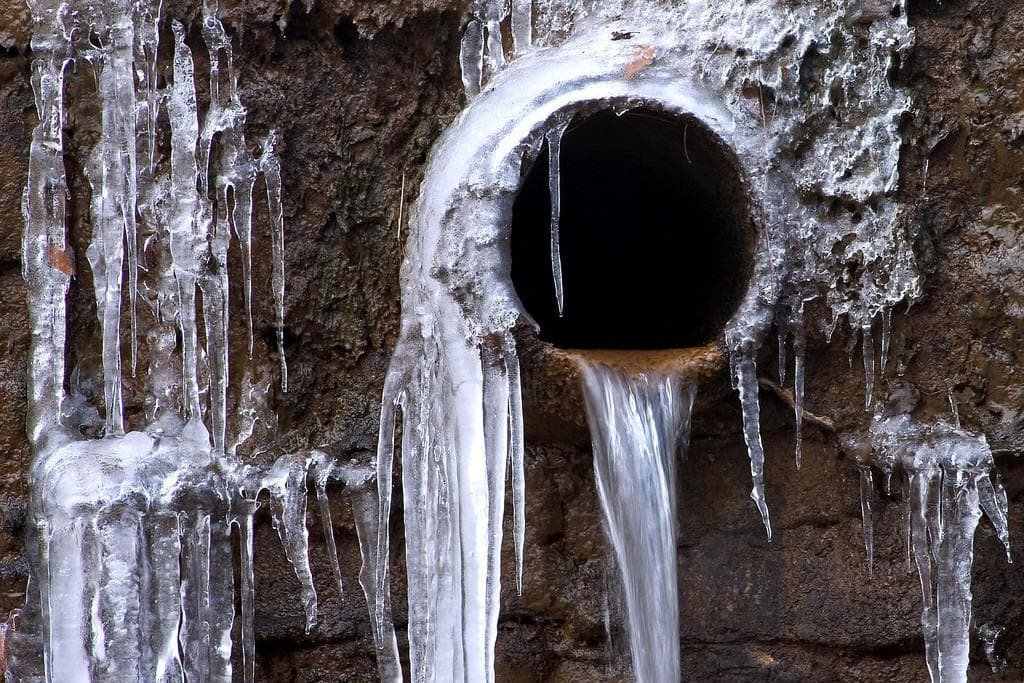The article which follows on the subject of Winter Plumbing Precautions: Preventing Frozen Pipes is fairly motivating. Read it yourself and figure out what you think of it.

Cold weather can wreak havoc on your plumbing, particularly by freezing pipelines. Below's just how to avoid it from taking place and what to do if it does.
Intro
As temperature levels drop, the threat of frozen pipelines boosts, potentially bring about costly repairs and water damages. Understanding exactly how to avoid frozen pipelines is crucial for home owners in cool climates.
Comprehending Icy Pipelines
What creates pipelines to freeze?
Pipes freeze when subjected to temperatures below 32 ° F (0 ° C) for extended periods. As water inside the pipelines ices up, it increases, putting pressure on the pipe walls and potentially causing them to break.
Dangers and damages
Icy pipelines can result in water supply interruptions, home damage, and expensive repairs. Ruptured pipelines can flood homes and cause considerable architectural damage.
Indications of Frozen Pipeline
Identifying icy pipes early can stop them from rupturing.
How to determine frozen pipelines
Look for reduced water flow from faucets, unusual smells or noises from pipes, and noticeable frost on exposed pipelines.
Prevention Tips
Protecting prone pipelines
Wrap pipelines in insulation sleeves or make use of heat tape to secure them from freezing temperature levels. Focus on pipes in unheated or outside locations of the home.
Home heating strategies
Maintain interior areas appropriately heated, especially areas with plumbing. Open cupboard doors to enable warm air to circulate around pipes under sinks.
Safeguarding Outside Plumbing
Garden hoses and outdoor faucets
Separate and drain pipes garden hose pipes before winter. Mount frost-proof faucets or cover outside faucets with insulated caps.
What to Do If Your Pipelines Freeze
Immediate activities to take
If you think frozen pipes, maintain taps available to alleviate stress as the ice thaws. Utilize a hairdryer or towels taken in hot water to thaw pipes gradually.
Long-Term Solutions
Structural adjustments
Think about rerouting pipelines away from exterior walls or unheated areas. Include additional insulation to attic rooms, cellars, and crawl spaces.
Upgrading insulation
Buy premium insulation for pipes, attic rooms, and walls. Correct insulation helps keep regular temperatures and minimizes the risk of icy pipelines.
Final thought
Preventing frozen pipes needs aggressive actions and quick actions. By recognizing the reasons, signs, and safety nets, homeowners can protect their plumbing during winter.
Helpful Tips to Prevent Frozen Pipes this Winter
UNDERSTANDING THE BASICS: WHY PIPES FREEZE AND WHY IT’S A PROBLEM
Water freezing inside pipes is common during the winter months, but understanding why pipes freeze, and the potential problems it can cause is crucial in preventing such incidents. This section will delve into the basics of why pipes freeze and the associated problems that may arise.
THE SCIENCE BEHIND FROZEN PIPES
When water reaches freezing temperatures, it undergoes a physical transformation and solidifies into ice. This expansion of water as it freezes is the primary reason pipes can burst. As the water inside the pipe freezes, it expands, creating immense pressure on the walls. If the pressure becomes too great, the pipe can crack or rupture, leading to leaks and water damage.
FACTORS THAT CONTRIBUTE TO PIPE FREEZING
Low Temperatures: Extremely cold weather, especially below freezing, increases the risk of pipes freezing. Uninsulated or Poorly Insulated Pipes: Pipes located in unheated areas, such as basements, crawl spaces, or attics, are more prone to freezing. Insufficient insulation or lack of insulation altogether exacerbates the problem. Exterior Wall Exposure: Pipes running along exterior walls are susceptible to freezing as they encounter colder temperatures outside. Lack of Heating or Temperature Regulation: Inadequate heating or inconsistent temperature control in your home can contribute to frozen pipes. PROBLEMS CAUSED BY FROZEN PIPES
- Pipe Bursting: As mentioned earlier, the expansion of water as it freezes can cause pipes to burst, resulting in significant water damage.
- Water Damage: When pipes burst, it can lead to flooding and water damage to your property, including walls, ceilings, flooring, and personal belongings.
- Structural Damage: Prolonged exposure to water from burst pipes can compromise the structural integrity of your home, leading to costly repairs.
- Mold and Mildew Growth: Excess moisture from water damage can create a favorable environment for mold and mildew growth, posing health risks to occupants.
- Disrupted Water Supply: Frozen pipes can also result in a complete or partial loss of water supply until the issue is resolved.
WHY CERTAIN PIPES ARE MORE PRONE TO FREEZING
- Location: Pipes located in unheated or poorly insulated areas, such as basements, crawl spaces, attics, or exterior walls, are at higher risk of freezing.
- Exterior Pipes: Outdoor pipes, such as those used for irrigation or exposed plumbing, are particularly vulnerable to freezing as they are directly exposed to the elements.
- Supply Lines: Pipes that carry water from the main water supply into your home, including the main water line, are critical to protect as freezing in these lines can affect your entire plumbing system.
- Underground Pipes: Pipes buried underground, such as those connected to sprinkler systems or outdoor faucets, can be susceptible to freezing if not properly insulated.
https://busybusy.com/blog/helpful-tips-to-prevent-frozen-pipes-this-winter/

We had been made aware of that report about 6 Ways to Prevent Frozen Pipes through someone on our other web blog. Are you aware of another person who is looking into Winter Plumbing Precautions: Preventing Frozen Pipes? Take a moment to share it. Bless you for being here. Come back soon.
Get A Quote